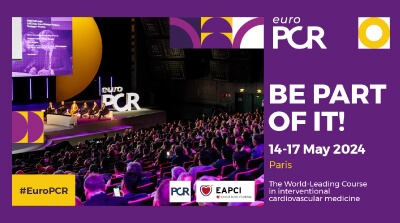In-stent restenosis (ISR) remains the main limitation in the percutaneous treatment of coronary artery disease, with a prevalence between 5% and 10% after implantation of latest-generation drug-eluting stents (DES). Therapeutic recommendations for it include the implantation of a new DES and the use of drug-coated balloons (DCB). The rate of recurrent ISR ranges from 10% to 40%; consequently, treatment is still a challenge nowadays.

The aim of this post hoc analysis of the ISAR-DESIRE 3 (Efficacy Study of Paclitaxel-Eluting Balloon, -Stent vs. Plain Angioplasty for Drug-Eluting Stent Restenosis) randomized trial was to investigate the incidence of long-term recurrent revascularization events after ISR treatment.
The primary endpoint (PEP) was repeat treated-lesion revascularization (R-TLR), defined as any repeat revascularization, either balloon angioplasty (BA) or surgery, after ISR recurrence.
At the end of the 10-year follow-up, the total R-TLR was 373: 162 in the BA group, 124 in the DCB group, and 87 in the DES group. During the first year of follow-up, the risk of R-TLR was reduced with DCB treatment (hazard ratio [HR]: 0.36; 95% confidence interval [CI]: 0.24-0.54) and DES treatment (HR: 0.23; 95% CI: 0.14-0.38) compared with BA treatment.
Read also: Resultados del tratamiento de las Oclusiones totales crónicas del Registro ERCTO.
After the first year of follow-up, the risk of R-TLR was non-significantly reduced with DCB (HR: 0.77; 95% CI: 0.51-1.16) and significantly reduced with DES treatment (HR: 0.61; 95% CI: 0.39-0.95). The risk in the DCB and DES groups was similar during (HR: 1.54; 95% CI: 0.89-2.69) and after (HR: 1.26; 95% CI: 0.82-1.92) the first year.
Conclusion
The total rate of R-TLR at 10 years is high. The use of DCB and DES reduces the need for primary and recurrent revascularization compared with BA.

Dr. Andrés Rodríguez.
Member of the Editorial Board of SOLACI.org.
Original Title: Recurrent Revascularization at 10 Years After Percutaneous Treatment of Drug-Eluting Stent Restenosis.
Reference: Tobias Koch, MD et al J Am Coll Cardiol Intv 2024;17:1–13.
Subscribe to our weekly newsletter
Get the latest scientific articles on interventional cardiology




